
Oliver Winchester’s legacy won’t ever be tied to a specific gun. The Winchester Repeating Arms Company is one of multiple legacies and successes throughout its century and a half of production. They started life as a lever-action rifle company and won the West. They transitioned to one of the premier shotgun companies at the turn of the 20th century and ended as a bolt gun company. We are going to cling to the second legacy and focus on shotguns, specifically the Model 12.
I initially thought about doing an Obscure Object of Desire article, but what’s obscure about the Model 12? TTAG tends to write and review new guns, but why not step back and appreciate a classic? Almost two million model 12s were produced, so they aren’t uncommon these days. You’ll pay a pretty penny for a Model 12 that is in good shape, but if the condition is a bit ratty, they can be had for a reasonable price. A ratty Model 12 is still better than any Freedom Group 870 you might find on the used market.
The Model 12 – The Perfect Repeater
The first successful pump-action shotgun was the Winchester M1897. This gun is legendary, and the Model 12 often lives in its shadow. However, the Model 12 is the superior shotgun. The M1897 was great but a bit complicated and fragile, and the exposed hammer and guts out of the bottom design weren’t the best. The Model 12 took the 1897 and fixed some of its flaws. The gun became known as the “Perfect Repeater.”
Production of the gun began in 1912. Winchester was creative and innovative with its guns, but its naming conventions were a bit boring. Production lasted until 1964, with occasional special runs of the guns.
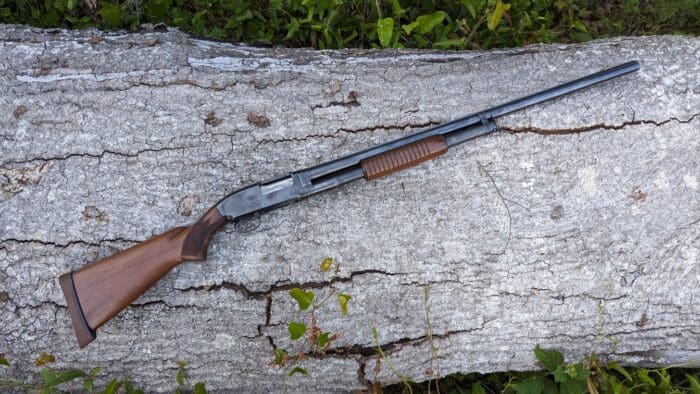
Winchester enclosed the hammer, beefed up the forend and built a refined gun. It’s smooth as silk and was originally built to supplement the 97. Winchester released the guns in 20 gauge at first. They didn’t want to compete with their own 1897. However, in 1913, they dedicated to releasing 12- and 16-gauge variants. A .410 variant was never produced, but the Model 42 was a scaled-down Model 12 for the .410 crowd.
Money Money Money
I think Winchester figured out that the Model 12 could be their premier gun, with the older 1897 being a more cost-efficient option. When the Model 12 went for sale, it cost $55, according to the Bureau of Labor inflation calculator, that rounds out to $1,741.63 today. The M1897 cost $35 or $1,108.31 in 2024 money. Both were expensive, but one was clearly cheaper. It was also a lot cheaper to chase down a cheap Belgian double gun than a pump gun at the time.
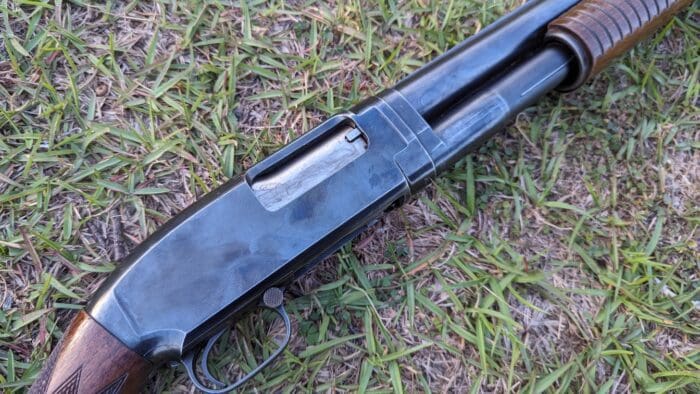

Keep in mind that even in 1912, the idea of a pump-action shotgun was fairly new. It was high-tech for the era. The price came from the fact that the gun was indeed a high-tech design, as well as the time and materials needed to produce it. This was a gun that was forged and used machine steel parts.
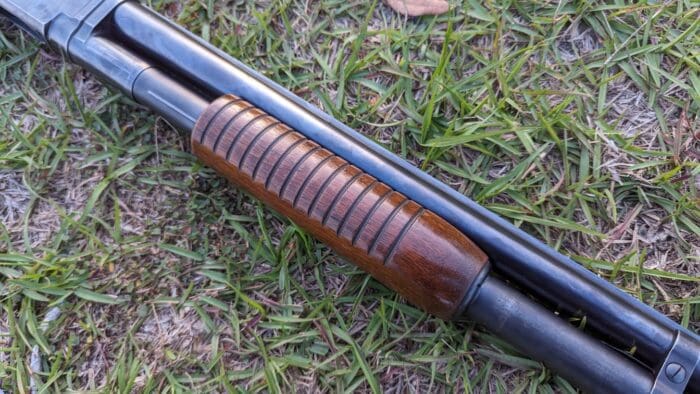

This was the kind of gun craftsmen built. That price killed the Model 12 in the 1960s. Remington swung in with the 870 and the modern means of production that made the Model 12 seem overpriced. Winchester couldn’t remain competitive with the Model 12, so it was discontinued in favor of the cheaper and easier-to-produce Model 1200.
A History of Service
Much like the M1897, the Model 12 served as a trench gun and military combat shotgun throughout WWI, WW2, Korea, Vietnam and likely longer, seeing as shotguns tend to stay in the back corners of armories long past their due date.
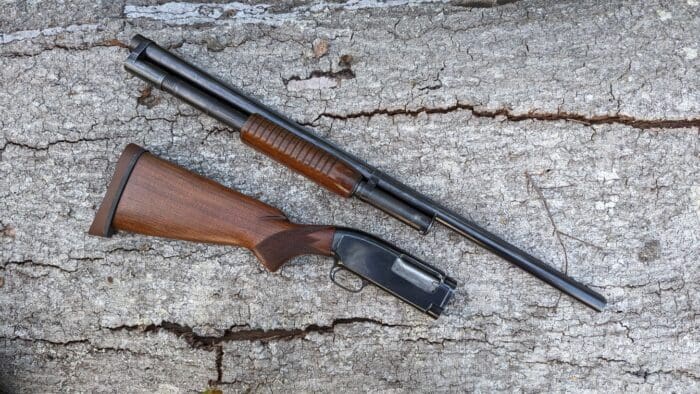

Back home, the gun occupied the hands of hunters who needed a reliable option, as well as trap shooters with various trap special guns. Police officers toted them. I remember years ago, a neighboring county sheriff’s department sold their last Model 12s, a testament to government inefficiency or a lasting design. (Sadly, I didn’t get a chance to pick one up.)
To The Range
I call my Model 12 my duck and buck gun. It’s a stock standard hunting shotgun with a 30-inch barrel, wood furniture and a plugged tube that reduces the tube to two rounds. Removing the plug opens up a six-round tube. It’s got a solid, unvented rib that is topped with a bead sight. The furniture is beautiful, and that blue finish is gorgeous. It’s a hefty gun, and you can see and feel the quality of the Model 12.
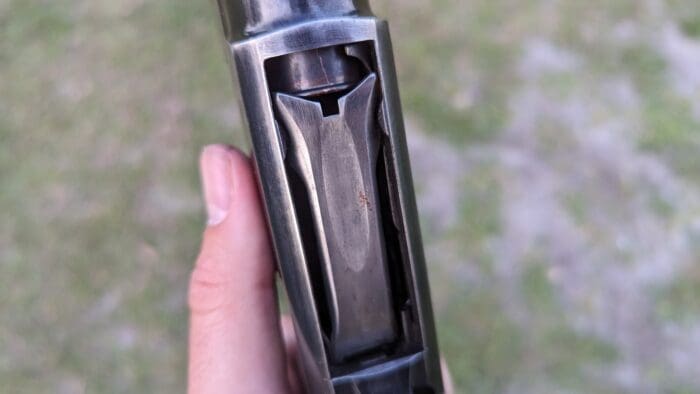

The first time I thumbed a round into the tube, I thought it was broken. I didn’t realize that the last shell in the tube just sort of hangs out there. Since we are talking about quirks, let’s look at the pump. It works like most other shotguns except in the manner you unlock the action. Shooters have to press the pump forward just slightly to unlock it. With most shotguns, when you fire, the pump unlocks and allows you to cycle the action.


While it’s an odd feature these days, it’s important to remember that pump shotguns were still new, so there wasn’t a standard. Plus, a lot of shotgunners pulled the gun tight to their shoulder. This locking mechanism kept the pump from flying rearward when you fired the gun.
With the Model 12, you had to press the pump forward just slightly and then retract the action. If you only ever use the modern push/pull technique, you will never notice the locking mechanism. There is also a standard action unlock right behind the trigger.
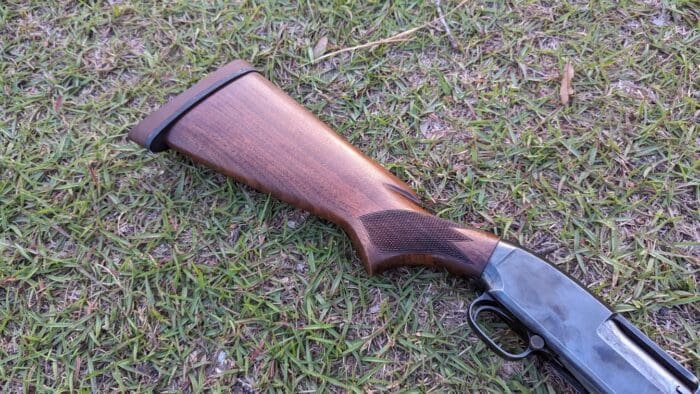

The cycle moves very easily, and it glides backward and forward, ushering shells into your chambers and sending hulls to their shallow grave.
Throwing Lead
The vent rib pushes the bead off the barrel enough to obtain a perfect point of aim/point of impact for buckshot and slugs. Standard Federal 2.75 inch, 1,250 FPS 00 buckshot went right where I wanted, from five to 25 yards. At 15 yards, the spread is about 9 inches, and it would probably be cleaned up with premium buckshot.
Beyond 25 yards, I could put slugs into a nice tight group. At 50 yards, the slugs grouped in a smaller than my hand-sized pattern. I doubt I’d need it to be more accurate than that for whitetails and hog. While I call it my duck and buck gun, the last time I hunted a duck was when someone tapped me on the head and called me goose.
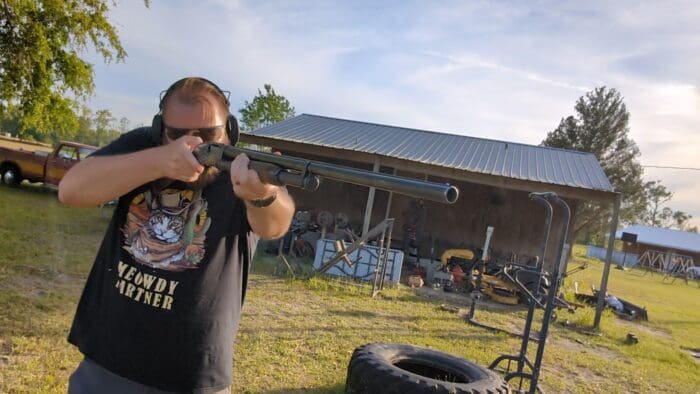

The weight of the gun absorbs recoil well, and the massive wood pump gives you plenty of purchase. You can run the gun ragged, and as long as you exercise good push/pull, you’ll never fail. It ejects positively and loads easily. Yes, it can slam fire, but slam fire is silly, kinda like bump fire.
Maybe it’s the fact I appreciate the old design and the bias it inhabits. However, I love shooting this gun. I typically shoot my long-barreled shotguns whenever I change buckshot to test their patterns, but that’s not true with the Model 12. At least once every few months, I throw a little buckshot or birdshot downrange. Sometimes, I use it to test loads just because I enjoy shooting it. It’s an old gun, but it’s not ready to be put out to pasture, nor will it be anytime soon.
Specifications
Barrel Length: 30 in.
Overall Length: 49.5 in.
Weight: 7 lbs., 7 ozs.
Capacity: 6 rounds
MSRP: $55 (in 1912! Today, you can find them for as little as $475 or as much as $2,000 [or even more] depending on their condition and specific model and ownership history.)
Ratings (Out of Five Stars)
Reliability *****
The gun eats and eats without complaint. The hefty steel gun always barks when needed and throws empties without worry.
Ergonomics ****
If you don’t know about the odd unlocking design, it might trick you. Additionally, it’s a hefty gun with a long length of pull, so I have to remove one star, regrettably.
Accuracy *****
The gun patterns tightly and hits where you aim. Bead sights will never be revolutionary, but they work and work well.
Overall **** (and a Half)
The Model 12 is a wonderful shotgun. It’s fun to shoot, accurate, reliable and a throwback to American craftsmanship. If you have one enjoy it, if you don’t, keep your eyes opened they pop up every now and then.
Read more gun reviews and articles by Travis Pike.
Read the full article here

